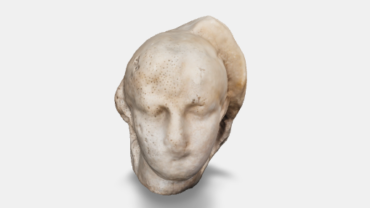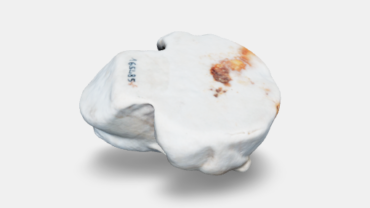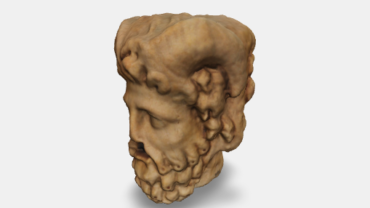
Fragment of a globular-shaped, concreted metallic container with a rounded rim (the tag wrongly indicates a shoulder with neck of an amphora). Biological degradation The artefact does not show signs of biological degradation. References

Stone anchor of a trapezoidal shape, with three through-holes. The upper one was used for mooring ropes, while the two lower parallel ones had a couple of wooden bills . Biological degradation The artefact presents traces of perforations caused by endolithic animals. There are numerous…

Small olla (olletta) with an approximatively biconical shape with a slightly everted, thin rim and a prominently everted, tongue-shaped handle. Flat bottom. Refined, thin-walled ceramics. Biological degradation The artefact presents an heterogeneous epilithic fouling, in which there are numerous specimens of Polychaeta Serpilidae characterised by…

A bell-shaped stone anchor with two quadrangular holes on the vertical axis. Holes made by lithophagus organisms. Biological degradation The artefact shows evident traces of perforation caused by endolithic animal organisms whose distribution seems to be different on the two flat surfaces. The whitish coloured…

Biological degradation The artefact is entirely colonized by fouling organisms, consisting almost exclusively of sedentary Polychaeta belonging to various genera. There are small calcareous tubes of various dimensions, of an elongated or coiled up shape and different ornaments on the surface. There is a lesser…

The shape evolved considerably between the IV and the VII century A.D. (PIÉRI, 2005; REYNOLDS, 2005). Its first specimens can be traced back in the mid-III century A.D. In the first half of the V century A.D. LRA1 (Late Roman Amphora 1) was initially exported…

Trapezoidal stone anchor with three holes. Circular upper hole with quadrangular lower holes. Traces of lithophagous organisms. Biological degradation The artefact presents clear traces of perforations caused by endolithic animal organisms. There are numerous small circular holes over a large part of the surface that…

A stone anchor or a deadweight/fixed mooring, roughly shaped as a doughnut. There are two perpendicular grooves in the central hole, attributable to the wear caused by mooring ropes. Biological degradation The artefact does not present traces of biological colonisation, probably thanks to the petrographic…

Female statuette in bronze, discovered in one of the inlets of the port, filled with lead to be used as a counterweight. Heavily worn out (face and hands). Traces of a probable applique on its head. Perhaps it can be interpreted as part of a…

Despite its state of preservation – compromised by a long permanence in water that damaged the majority of physiognomic features – this veiled female head found in the waters of the banks of Puteoli provides us with interesting details about the activities of the nearby…

Heavily eroded due to a long permanence underwater, the head may be attributed to the iconography of an old bearded Silenus. It is one of numerous sculptural elements, submerged by the sea due to bradyseism, that were found in 1972 along the banks of Puteoli,…

A part of a locally made herm of poor quality, this two-faced head probably adorned a balustrade of a private garden, and it was adapted for a fountain only at a later time. The two opposing faces are those of a young Dionysius with vine…


